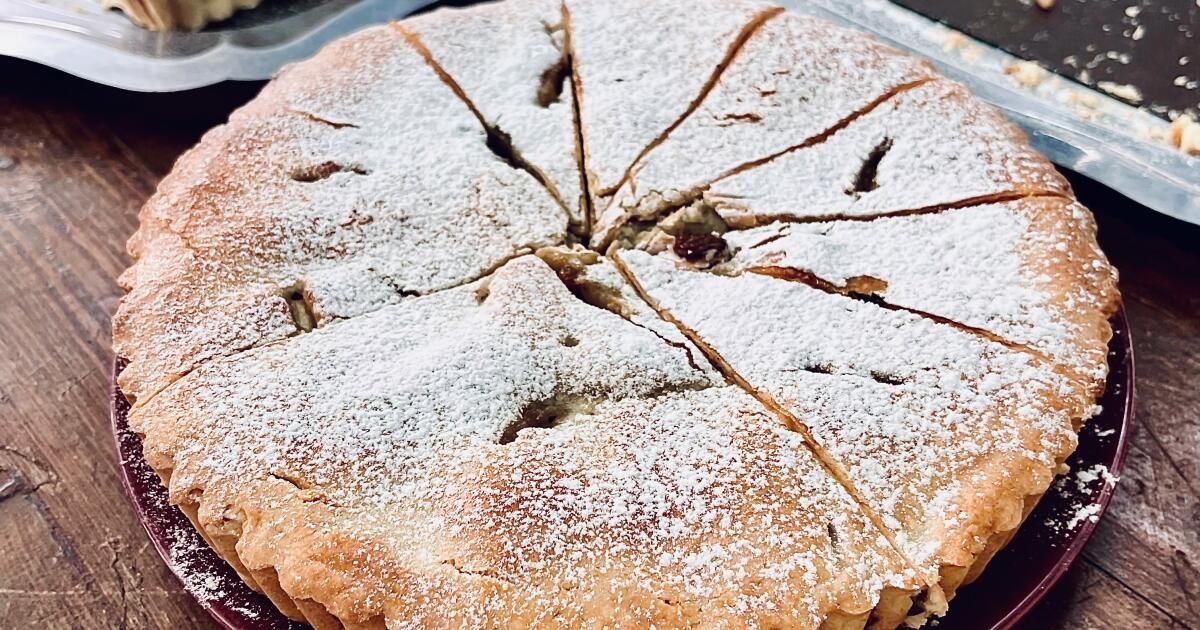When I first moved to Nice, France, I lived upstairs from the now-defunct Espuno bakery, which had been run by the same family for generations. This bakery did not have any of the elaborate pastries I had become accustomed to seeing in Paris; Instead, along with croissants and brioches, it featured square pieces of cake with a dark green filling and the top crust sprinkled with a thick layer of sugar.
This was my first exposure to tourte de blettes sucrée, the iconic Niçoise dessert sold in most local bakeries and is, for many children, including my son, a primary source of vegetables in their diet. Filled with a sweetened mixture of chard, rum-soaked raisins, pine nuts, apple, and perhaps grated Parmesan or Sbrinz (an aged Swiss cheese), this dessert appears nowhere else in France, although Tuscan cooks make a similar pie using vin holy instead of rum.
It was born from the abundance of chard; In winter, when local fruit was scarce, cooks used what was available to satisfy a sweet craving. The sugar coating, originally granulated but now almost always powdered, distinguishes it from the tasty tourte de blettes salée, which is filled with a mixture of chard, rice, bacon, parmesan and egg.
There are as many variations of this dessert as there are families in Nice, but I like this one adapted from a recipe by Hélène Barale, who once ran a famous Niçoise restaurant that bears her name. Her use of apricot jam adds another fruity element besides the apple, without sweetening the cake too much.
If you're serving this to kids, don't worry about the rum: the alcohol evaporates in the oven. However, the quality of the rum makes a difference in the final flavor of the cake, so use one that you like to drink. And soak the raisins overnight if you can.












